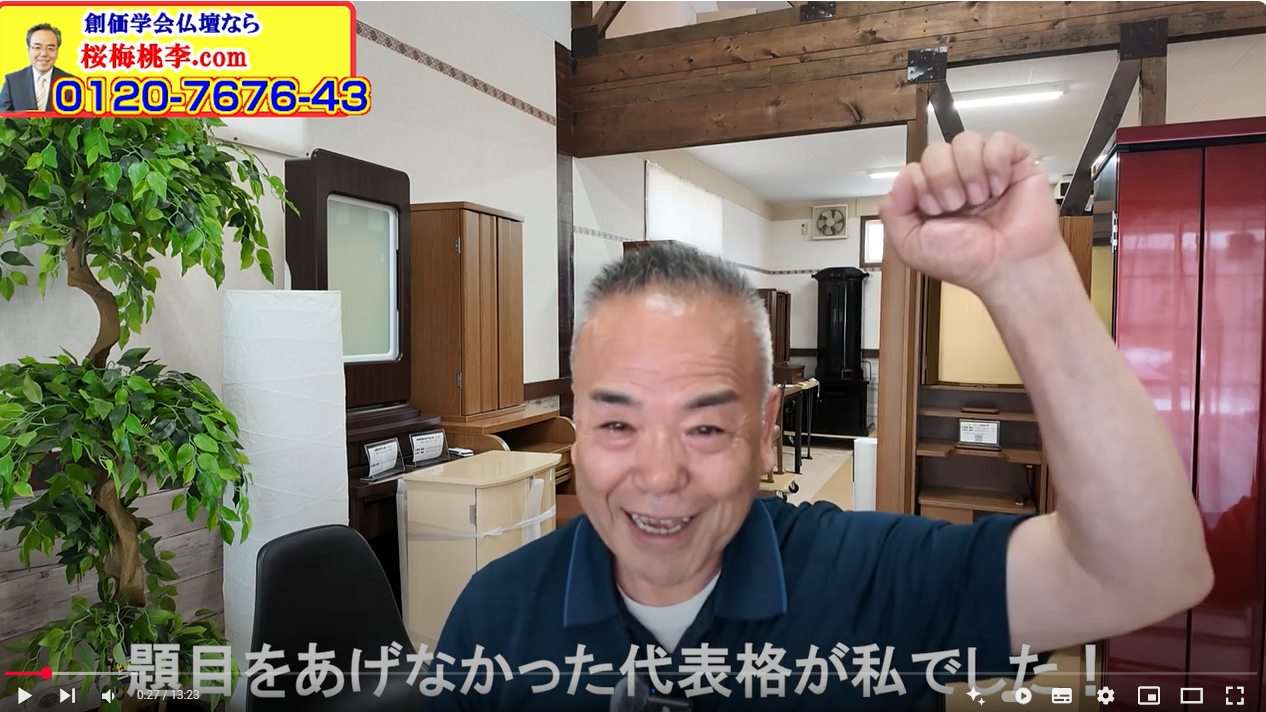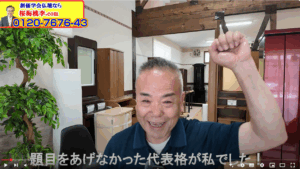Good morning! This is Shima from Oubaitori.com. I hope you’re doing well today!
Today, I’d like to share my strong feelings about “Daimoku” (chanting Nam-myoho-renge-kyo), something I struggled with for many years, and about “Kokuu Zushi,” a Soka Buddhist altar, which helped me overcome that struggle. Perhaps some of you might be facing similar challenges.
1. My Struggle with “Disliking Daimoku”
Generally, I feel that many women continue to chant Daimoku, while men tend not to. And I, without a doubt, was a prime example of the latter. While I enjoyed Soka Gakkai activities, I genuinely disliked chanting Daimoku at home; performing Gongyo (daily prayers) was all I could manage. Even when I resolved to chant for an hour, I couldn’t keep it up. Simply sitting still and chanting “Nam-myoho-renge-kyo” was incredibly difficult for me.
However, before I knew it, I had reached this age. When I considered what to do with my life, I keenly felt that I had “been deceiving myself” until now. While I had managed to get by with knowledge and strategies, there was a limit to that. Why wasn’t my current situation changing? It was then that I realized, deep down, that “there’s truly nothing else but Daimoku.”
As someone who runs a Buddhist altar shop specializing in Soka Gakkai altars, it’s honestly embarrassing to admit that I wasn’t chanting Daimoku myself. Of course, there were times when I chanted for business reasons, when sales dropped, and indeed, sales did improve. But can that truly be called deep faith? Or was it just the strength of my desperate resolve?
As an individual, and having been in the Soka Buddhist altar business for over 40 years, I truly questioned whether I had genuine faith. I spent days deeply asking myself, “What exactly is faith?” From there, I finally started chanting Daimoku. As I did, I keenly realized how “this one point was missing” in various aspects of my life, precisely because I hadn’t been chanting before.
There’s a saying about pouring water into a sieve, which describes “futile effort, something ineffective; a wasted effort for little gain.”
Perhaps I had been living such a life. However, we weren’t born to live lives like that. That’s precisely why Daimoku is fundamental.
2. From “Gosho Fundamental” to “Daimoku Fundamental”
While we speak of “Gosho (Nichiren Daishonin’s writings) Fundamental,” its ultimate meaning leads to “Daimoku Fundamental.” We learn the Daishonin’s teachings directly from the Gosho, and we learn the faith of Mr. Makiguchi, Mr. Toda, and Mr. Ikeda from The Human Revolution and The New Human Revolution.
As we earnestly seek the Way as human beings, as practitioners of Buddhism, and as Soka Gakkai members, the moment our lives rejoice the most is still when we chant Daimoku.
In the past, my legs would go numb, and I couldn’t sit still… Perhaps I had a developmental disorder.
However, my single resolution was this: “I will chant Daimoku.” And for me, to continue chanting Daimoku, a “great purpose” was also necessary.
3. The Genesis of “Kokuu Zushi”: I Want to Create an Altar That Makes Me Want to Chant!
“How can I make myself want to chant Daimoku?” This question led to the birth of “Kokuu Zushi,” which I developed.
When I spoke to existing Buddhist altar manufacturers, they wouldn’t listen. It might not be the best way to put it, but it was clear that the manufacturers’ mindset was: “It’s inconvenient to use,” “They’re made for the manufacturers’ convenience,” and “Let’s reduce costs to make altars that sell for less.” I disliked that.
Soka Gakkai members save up and purchase Buddhist altars with sincere devotion. They cannot just buy anything. As a Soka Buddhist altar specialist, the ideal Soka Buddhist altar must first and foremost allow the Gohonzon to be properly enshrined. And once enshrined, it must be an altar that makes one truly feel, with one’s very being, that it was wonderful to make such a magnificent and solemn offering. However, it shouldn’t end with just “I’m glad I bought it.”
4. The Gohonzon of the Essential Teaching, The Essential Kaidan, and The Daimoku of the Essential Teaching: Where the Three Treasures Align
“Kokuu Zushi” aims to create a space that naturally encourages chanting, maximizing the benefits of Daimoku.
With the Gohonzon of the Essential Teaching, the Essential Kaidan, and the Daimoku of the Essential Teaching—these Three Treasures—in place, true faith finally begins. If this part isn’t embodied in one’s life, it becomes merely formal. If you’re satisfied with just the formalities, you’ll lose out.
Some people say, “You don’t have to buy an expensive one.” It’s obvious that faith isn’t determined by the altar. However, as Soka Gakkai members, shouldn’t we approach the Gohonzon and our own lives with more sincerity and respect?
5. “Though it may be a presumptuous way of putting it, the Gohonzon can be said to be a happiness-producing machine.”
Mr. Toda described the Gohonzon by saying, “Though it may be a presumptuous way of putting it, the Gohonzon can be said to be a happiness-producing machine.” In what kind of Buddhist altar do you enshrine that Gohonzon?
I believe that one should choose an altar that one can believe, without a shadow of a doubt, will “make me want to chant from now on” and “put me in the mood to chant.”
And if that is the case, then you will surely chant Daimoku. By chanting Daimoku, you can transform your destiny and achieve your human revolution. Of course, it’s not enough to simply “pray” or “chant Daimoku.” Chanting Daimoku should inevitably lead you to take action. If your chanting doesn’t inspire you to act, perhaps your way of praying is amiss.
No one can fundamentally understand the state of your body, the state of your mind, or the struggles of your life. That’s why you must realize it for yourself. And above all, it’s crucial whether you can bring forth the Buddha nature in your life, as Nam-myoho-renge-kyo, to its highest potential.
6. Prioritizing Yourself to Create the Best Life
Humans experience various turning points throughout their lives. I, too, have walked various paths over 44 years as a Soka Buddhist altar specialist. What I’ve come to realize is the importance of living your own life, valuing your own feelings and your own resolve above all else. This is not selfishness in any way.
You are, without a doubt, the protagonist of your own life. And towards those you encounter, you pray for the happiness of both yourself and others, fulfilling the mission that only you can accomplish, and the mission that only I can accomplish.
That’s why, for your sake and for my own, I will continue to seriously research, develop, and manufacture “Kokuu Zushi.” My hope is that having this altar will make it an even more wonderful presence that inspires people worldwide to chant Daimoku.
Thank you very much for listening until the end. “Kokuu Zushi” is also located behind here. We will be creating another dignified “Kokuu Zushi” for the period after this summer, so please look forward to it!


